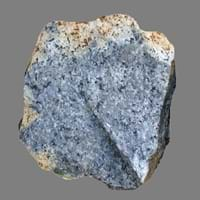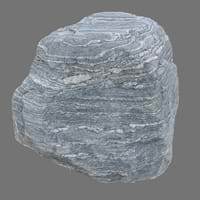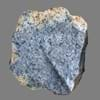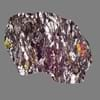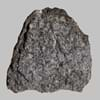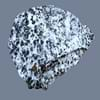Definition
Syenite is a coarse-grained igneous rock which is composed mainly of alkali feldspar and various ferromagnesian minerals
Migmatite is typically a granitic rock within a metamorphic host rock which is composed of two intermingled but distinguishable components
Origin
Unknown
Southern Alps, France
Discoverer
Unknown
Jakob Sederholm
Etymology
From French syénite, from Latin Syenites (lapis ) (stone) of Syene
From the Greek word migma which means a mixture
Class
Igneous Rocks
Metamorphic Rocks
Sub-Class
Durable Rock, Medium Hardness Rock
Durable Rock, Medium Hardness Rock
Group
Plutonic
Not Applicable
Other Categories
Coarse Grained Rock, Fine Grained Rock, Medium Grained Rock, Opaque Rock
Coarse Grained Rock, Fine Grained Rock, Medium Grained Rock, Opaque Rock
Color
Brown, Buff, Cream, Green, Grey, Pink, White
Black, Bluish - Grey, Brown, Brown- Black, Dark Greenish - Grey, Dark Grey to Black
Durability
Durable
Durable
Scratch Resistant
Yes
Yes
Appearance
Banded and Foilated
Dull, Banded and Foilated
Interior Uses
Flooring, Homes, Hotels, Interior Decoration
Countertops, Flooring, Kitchens
Exterior Uses
As Building Stone, As Facing Stone, Paving Stone, Garden Decoration, Office Buildings
As Building Stone, As Facing Stone
Other Architectural Uses
Curbing
Curbing
Construction Industry
As Dimension Stone, Cement Manufacture, Construction Aggregate, for Road Aggregate, Landscaping, Making natural cement, Manufacture of Magnesium and Dolomite Refractories
As Dimension Stone, Cement Manufacture, for Road Aggregate, Making natural cement
Medical Industry
Not Yet Used
Not Yet Used
Antiquity Uses
Artifacts, Monuments, Sculpture, Small Figurines
Artifacts
Commercial Uses
Cemetery Markers, Creating Artwork
Cemetery Markers, Jewelry, Tombstones, Used to manufracture paperweights and bookends
Types
Shonkinite
Diatexites and Metatexites
Features
Available in Lots of Colors and Patterns, Is one of the oldest rock, Matrix variable
Generally rough to touch, Is one of the oldest rock
Archaeological Significance
Monuments
Used
Not Yet Used
Famous Monuments
Data Not Available
Not Applicable
Sculpture
Used
Not Yet Used
Famous Sculptures
Data Not Available
Not Applicable
Figurines
Used
Not Yet Used
Formation
Syenites are formed due to alkaline igneous activities and are generally formed in thick continental crustal areas or in Cordilleran subduction zones.
Migmatites form by high temperature regional and thermal metamorphism of protolith rocks where rocks melt partially due to high temperature.
Mineral Content
Amphibole, Biotite, Feldspar, Hornblade, Micas, Muscovite or Illite, Plagioclase, Pyroxene, Quartz
Biotite, Chlorite, Feldspar, Garnet, Graphite, Hornblade, Micas, Muscovite or Illite, Quartz, Quartzite, Silica, Zircon
Compound Content
Aluminium Oxide, CaO, Iron(III) Oxide, FeO, Potassium Oxide, MgO, MnO, Sodium Oxide, Phosphorus Pentoxide, Silicon Dioxide, Titanium Dioxide
Aluminium Oxide, NaCl, CaO, Carbon Dioxide, Iron(III) Oxide, FeO, Potassium Oxide, Magnesium Carbonate, MgO, MnO, Phosphorus Pentoxide, Silicon Dioxide, Titanium Dioxide
Types of Metamorphism
Burial Metamorphism, Cataclastic Metamorphism, Contact Metamorphism, Hydrothermal Metamorphism, Impact Metamorphism, Regional Metamorphism
Burial Metamorphism, Cataclastic Metamorphism, Regional Metamorphism
Types of Weathering
Biological Weathering, Chemical Weathering, Mechanical Weathering
Biological Weathering, Chemical Weathering, Mechanical Weathering
Types of Erosion
Chemical Erosion, Coastal Erosion, Glacier Erosion, Sea Erosion, Water Erosion, Wind Erosion
Chemical Erosion, Glacier Erosion, Water Erosion, Wind Erosion
Grain Size
Medium to Fine Coarse Grained
Medium to Fine Coarse Grained
Fracture
Not Available
Irregular
Porosity
Less Porous
Very Less Porous
Luster
Subvitreous to Dull
Dull to Pearly to Subvitreous
Compressive Strength
Not Available
Toughness
Not Available
1.2
Specific Gravity
2.6-2.7
2.65-2.75
Transparency
Opaque
Opaque
Density
2.6-2.8 g/cm3
Not Available
Specific Heat Capacity
Not Available
Resistance
Heat Resistant, Impact Resistant, Wear Resistant
Heat Resistant, Pressure Resistant
Deposits in Eastern Continents
Asia
China, India, Iran, Saudi Arabia, Sri Lanka, Taiwan, Thailand, Turkey, Vietnam
China, India, Iran, Iraq, Kazakhstan, Kyrgyzstan, Mongolia, Russia
Africa
Angola, Egypt, Madagascar, Namibia, Nigeria, South Africa
Cameroon, Ethiopia, Ghana, Kenya, Madagascar, Morocco, Mozambique, Namibia, Nigeria, Tanzania, Togo
Europe
Bulgaria, England, Germany, Norway, Romania, Switzerland
Albania, Austria, Bosnia and Herzegovina, Finland, France, Georgia, Germany, Hungary, Italy, Kosovo, Monaco, Norway, Poland, Romania, Serbia, Slovakia, Slovenia, Sweden, Switzerland, Ukraine, United Kingdom
Others
Not Yet Found
Not Yet Found
Deposits in Western Continents
North America
USA
Canada, Costa Rica, Cuba, Mexico, Panama, USA
South America
Brazil, Chile
Argentina, Bolivia, Brazil, Chile, Colombia, Ecuador, Peru, Venezuela
Deposits in Oceania Continent
Australia
New Zealand, Queensland, South Australia, Western Australia
New South Wales, New Zealand, Queensland, Victoria
Syenite vs Migmatite Characteristics
Though some rocks look identical, they have certain characteristics which distinguish them from others. Characteristics of rocks include texture, appearance, color, fracture, streak, hardness etc. Syenite vs Migmatite characteristics assist us to distinguish and recognize rocks. Also you can check about Properties of Syenite and Properties of Migmatite. Learn more about Syenite vs Migmatite in the next section. The interior uses of Syenite include Flooring, Homes, Hotels and Interior decoration whereas the interior uses of Migmatite include Countertops, Flooring and Kitchens. Due to some exceptional properties of Syenite and Migmatite, they have various applications in construction industry. The uses of Syenite in construction industry include As dimension stone, Cement manufacture, Construction aggregate, For road aggregate, Landscaping, Making natural cement, Manufacture of magnesium and dolomite refractories and that of Migmatite include As dimension stone, Cement manufacture, For road aggregate, Making natural cement.
More about Syenite and Migmatite
Here you can know more about Syenite and Migmatite. The life cycle of a rock consists of formation of rock, composition of rock and transformation of rock. The composition of Syenite and Migmatite consists of mineral content and compound content. The mineral content of Syenite includes Amphibole, Biotite, Feldspar, Hornblade, Micas, Muscovite or Illite, Plagioclase, Pyroxene, Quartz and mineral content of Migmatite includes Biotite, Chlorite, Feldspar, Garnet, Graphite, Hornblade, Micas, Muscovite or Illite, Quartz, Quartzite, Silica, Zircon. You can also check out the list of all Igneous Rocks. When we have to compare Syenite vs Migmatite, the texture, color and appearance plays an important role in determining the type of rock. Syenite is available in brown, buff, cream, green, grey, pink, white colors whereas, Migmatite is available in black, bluish - grey, brown, brown- black, dark greenish - grey, dark grey to black colors. Appearance of Syenite is Banded and Foilated and that of Migmatite is Dull, Banded and Foilated. Properties of rock is another aspect for Syenite vs Migmatite. The hardness of Syenite is 5.5-6 and that of Migmatite is 5.5-6.5. The types of Syenite are Shonkinite whereas types of Migmatite are Diatexites and Metatexites. Streak of rock is the color of powder produced when it is dragged across an unweathered surface. The streak of Syenite and Migmatite is white. The specific heat capacity of Syenite is 0.92 kJ/Kg K and that of Migmatite is Not Available. Depending on the properties like hardness, toughness, specific heat capacity, porosity etc., rocks are resistant to heat, wear, impact, etc.Syenite is heat resistant, impact resistant, wear resistant whereas Migmatite is heat resistant, pressure resistant.
